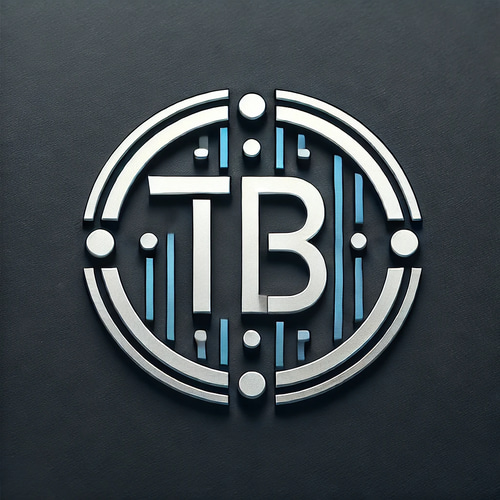Crypto vs. CBDCs: Understanding the Key Differences
What’s the difference between cryptocurrency and CBDCs? This guide explores decentralization, control, and financial freedom, plus an overview of digital assets like NFTs, tokens, and stablecoins.
Trailblazer
3/27/20253 min read


Why This Matters
With the rise of digital finance, people often confuse cryptocurrency and Central Bank Digital Currencies (CBDCs). While both exist in digital form, they fundamentally differ regarding control, privacy, and purpose.
Cryptocurrency is decentralized, transparent, and free from government control. In contrast, CBDCs are issued and controlled by governments, serving as digital versions of traditional fiat money.
This post will break down the differences between crypto and CBDCs while also explaining various types of digital assets, including Non-Fungible Tokens (NFTs), tokens, and stablecoins.
What is a Cryptocurrency?
Most cryptos are decentralized digital currencies built on blockchain technology. Unlike traditional currencies issued by governments, crypto operates on a peer-to-peer network without the need for central authorities like banks or governments.
Key Features of Cryptocurrency:
Decentralized - No government or central bank control.
Secure & Transparent - Transactions are recorded on a blockchain, making them verifiable and tamper-proof.
Limited Supply - Many cryptocurrencies, like Bitcoin, have a fixed supply to prevent inflation.
Borderless & Permissionless - Can be sent and received worldwide without intermediaries.
Examples of Popular Cryptocurrencies:
Bitcoin (BTC) - The first and most well-known cryptocurrency, often called "digital gold."
Ethereum (ETH) - A blockchain platform that enables smart contracts and decentralized applications (dApps).
Altcoins - Cryptos beyond Bitcoin, such as Litecoin (LTC), Cardano (ADA), and Solana (SOL).
What is a CBDC?
A Central Bank Digital Currency (CBDC) is a digital version of a country's fiat currency issued and regulated by its central bank. Unlike cryptocurrencies, which operate independently, CBDCs are fully centralized and government-controlled.
Key Features of CBDCs:
Centralized Control - Governments control supply, issuance, and transactions.
Traceable & Programmable - Governments can track your spending, set restrictions, or even program how you use your currency.
Not Permissionless - Requires a government or bank intermediary for transactions.
Unlimited Supply - This can be printed digitally at the central bank's discretion.
Examples of CBDCs:
China's Digital Yuan (e-CNY)
Europe's Digital Euro
Canada and the US are considering a Digital Dollar
While crypto gives users control over their money, CBDCs increase financial oversight, allowing governments to track and restrict transactions.
Key Differences Between Cryptocurrency & CBDCs
Cryptocurrency (BTC, ETH)
Control - Decentralized (No central authority)
Privacy - Pseudonymous (No direct tracking)
Supply - Limited or fixed supply
Purpose - Alternative to banks, financial independence
Transactions - Peer-to-peer, permissionless
CBDC (Digital Dollar, Digital Yuan)
Control - Centralized (Government-controlled)
Privacy - Fully traceable by the government
Supply - Unlimited (like fiat money)
Purpose - Digital version of traditional fiat money
Transactions - Requires government approval
Crypto offers financial freedom, while CBDCs could enable more government control over currency.
Why This Matters
Governments worldwide are exploring CBDCs, but they differ drastically from cryptocurrencies. While crypto provides financial sovereignty, CBDCs could increase financial surveillance. Understanding these differences helps individuals make informed decisions about the future of digital money.
Different Types of Digital Assets
Beyond cryptocurrencies and CBDCs, the digital asset space includes tokens, stablecoins, and NFTs. Here's what you need to know:
Cryptocurrencies (Bitcoin, Ethereum, etc.)
Used as currency or store of value.
Some (like BTC) act as digital gold, while others (like ETH) power blockchain networks.
Tokens (Utility vs. Security Tokens)
Utility Tokens: Provide access to a platform or service (e.g., Chainlink (LINK), Uniswap (UNI)).
Security Tokens: Represent ownership in a real-world asset (e.g., tokenized stocks, real estate tokens).
Stablecoins (USDT, USDC, DAI)
Pegged to stable assets (like the US dollar) to reduce volatility.
Used for payments, savings, and transfers in the crypto ecosystem.
NFTs (Non-Fungible Tokens)
Digital ownership of art, music, and virtual assets (e.g., Bored Apes, CryptoPunks).
Built on blockchains like Ethereum and Solana.
Think of NFTs like digital collectibles that prove ownership of an item.
What's Next?
In our next post, we'll cover how to buy and safely store cryptocurrency, including:
Choosing a crypto exchange
Understanding wallets (hot vs. cold storage)
Security tips to protect your assets
💡 New to crypto? If you come across unfamiliar terms, check out the Crypto Terms & Definitions page for clear explanations of key concepts.
✨ Empowering you to navigate the digital economy with confidence. ✨
Be sure to bookmark this page and follow along as I explore crypto, markets, and investing strategies!
Join the Trailblazer Crypto Community
© 2025. All rights reserved.


